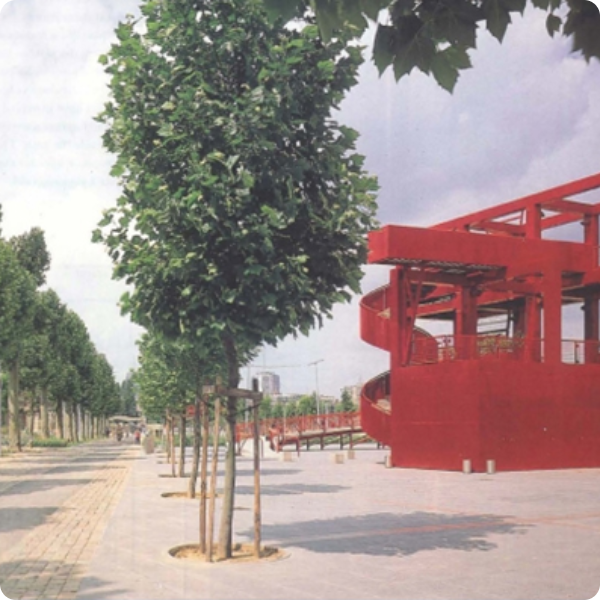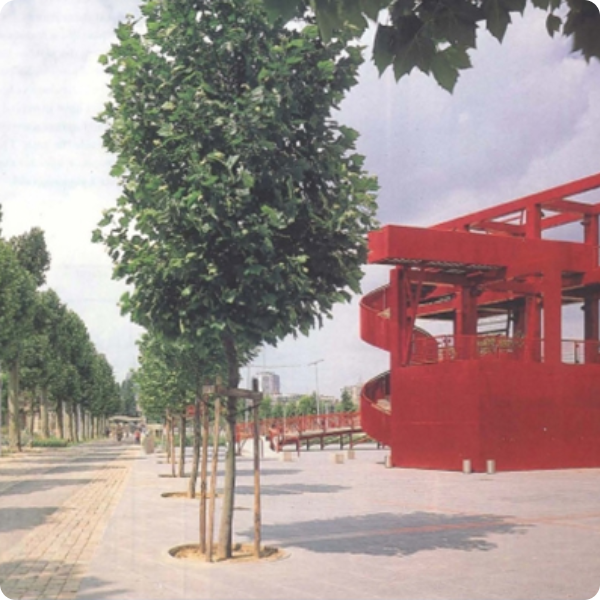
Blog Post

B. Tschumi was a graduate of ETH Zurich in 1969, receiving a degree in architecture. Following this, he was a teacher at many notable universities in the UK and USA, including the Architectural Association, Princeton University, Cooper Union and Colombia University. Additionally, Bernard established his own successful architecture firms, Bernard Tschumi Architects (BTA), in New York City and, Bernard Tschumi Urbanistes Architectes (BTUA), in Paris.
Bernard Tschumi was a controversial figure throughout his life as an architect. As a student, he was greatly influenced by the 1968 riots in Paris and the ideologies of the Situationist International. During this period, students and workers demanded higher living and educational standards be imposed, hierarchies be abolished, and cross-disciplinary, socially relatable content be taught. These demands came as a revolution against the strict, historical principles of the institutions. Most notably to Tschumi, the Ecole des Beaux-Arts, a famed architectural school known for its difficulty and style that has influenced many architects across the world. The student strikes inspired Tschumi to reconsider the role of architecture in developing and enforcing the hierarchies and oppression of the time. Further to this, the cross-disciplinary demands on students inspired Tschumi to investigate the influences of differing mediums to inform his architectural approach.
The revolutionary thinking of Bernard Tschumi was apparent from his early career as an academic. The Manhattan Transcripts (1981) was one of Tschumi’s earliest projects that demonstrated how cross-disciplinary techniques can breed new architectural results. Greatly influenced by the famous Russian director Sergei Eisenstein, a pioneer in the use of montage as a film technique. Bernard Tschumi utilised similar techniques by taking stills of dynamic scenes from films, diagramming the movement of the actors and using these forms to generate architectural use, form and social values. By doing this, B. Tschumi aimed to explore the relationship between spaces, their use and their meaning. a stark contrast to the architectural thinking of the time. He stated, The transcripts aimed to offer a different reading of architecture in which space, movement and events are independent, yet stand in new relation to one another, so that conventional components of architecture are broken down and rebuilt along different axes1 Bernard Tschumi.
One year after publishing The Manhattan Transcripts, Bernard Tschumi won his first major work, the Parc de la Villette. This gave Tschumi the opportunity to transition his previously theoretical concepts to reconceive use, form and social values1 within architecture to reality. Synchronically, a project of this scale, awarded by the French Government, to an architect widely known for his contrasting philosophies, represented a new approach to architecture Peter Blundell (2012). This new approach would severely contrast typical Parisian open spaces commonly referenced in paintings such as George Seaurats A Sunday on La Grande Jatte . Public parks were uniformly designed as an escape from the city during this time, however, Tschumis design included a vast array of cultural facilities to blur this boundary and create a park based on culture, rather than nature Tschumi. Further to this, a series of points (steel follies), are located throughout the site; none of these structures possess a specific use except to emphasize the movement through the park Tschumi. While controversial, these structures articulate clearly the revolutionary thinking of Bernard Tschumi. By incorporating these structures, the function of the site remains unique to the visitor and un-imposed; allowing for constant reinterpretation and continued cultural relevance, addressing previously mentioned issues relating to the 1968 student riots. The game of architecture is neither function (questions of use), nor form (questions of style), nor even the synthesis of function and form, but rather the bringing together of possible combinations and permutations between different categories of analysis – space, movement, event , technique, symbol, etc I am not interested in form ,I attack the system of meaning. I am for the idea of structure and syntax, but no meaning. Tschumi
Bernard Tschumi continued to challenge the traditional methods and preconceptions of architecture throughout his career, however, he also consistently met criticism regarding his projects. Often described as an intellectual who dismisses human needs in return scholarly superiority; Thomas Hines 1994 article in The New York Times supports this claim, stating the eroticism he finds in architecture is really an obsession with rules and the architects desire both to impose and to transgress them . Further to this, Hine describes Mr. Tschumis Art5 as in a hermetic world that lacks the primitive, truly architectural pleasures created by light and shadow, colour and texture, expansiveness and enclosure, rhythm ad incident. Ultimately, I believe it is this kind of criticism that Tschumi himself would have welcomed and encouraged; he developed his work by questioning the decisions of those made before him and reconceiving the urban environment via new forms of experimentation. Tschumis use of external influences to inform his architectural explorations was revolutionary and deeply significant to architecture and society. However, the impact his interpretation of these influences has had is matched by the ongoing impact of his influence on other modern architects. Zaha Hadid, Rem Koolhaas, Peter Zumthor and many more have referenced Tschumi in their work, often implementing his principles or techniques in their analysis of the problems associated with contemporary cities. One such example of this is Rem Koolhaas Junkspace, specifically, in Bigness, or the Problem of Large, Koolhaas identifies a similar separation between contemporary structures and the cities inhabitants; declaring these faceless, bland and random buildings as separate entities, larger than they need to be and leading to a rich orchestration of chaos.
